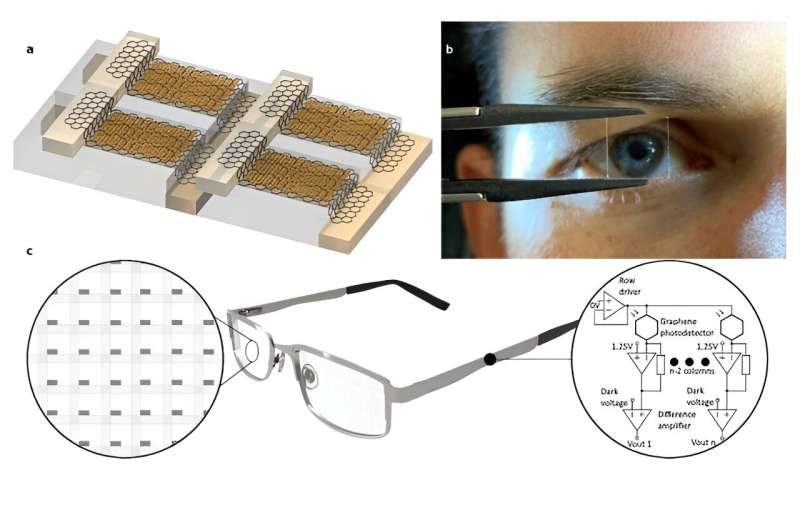April 2, 2024 report
This article has been reviewed according to Science X's editorial process and policies. Editors have highlighted the following attributes while ensuring the content's credibility:
fact-checked
preprint
trusted source
proofread
Semi-transparent camera allows for eye tracking without obstructing the view

A team of engineers at The Barcelona Institute of Science and Technology's ICFO–Institut de Ciències Fotòniques has developed a nearly transparent camera that can be used for eye tracking without obstructing the view. The team has published a paper describing their camera and its performance as an eye tracker on the arXiv preprint server.
Using technology to track eye movement is beneficial in applications such as virtual reality helmets, automotive assistance devices and even advertising tracking. But the technology has remained stagnant due to one major problem—devices in front of the eyes obstruct the user's view. In this new effort, the researchers in Spain have overcome this problem by developing a camera that is nearly invisible.
To create their camera, the research team built a photodetector by adding small dots of lead sulfide to sheets of graphene. When struck by a photon, the dots emit electrons that flow across the layer of carbon atoms, producing a current. And because the materials used to create the photodetector are so small, they are nearly invisible to the naked eye—in tests, it was capable of allowing 95% of light to pass through it.
Further testing involved projecting greyscale patterns onto the photodetector and comparing the output with a standard image sensor. The researchers say the results are promising. They also noted that it had a refresh rate of 400Hz, approximately twice that needed for producing reliable imagery. They then simulated eye tracking by projecting a small dark dot onto the photodetector and used the output to track the action as it occurred.
In practice, the camera could potentially be applied to standard eyeglasses, or better yet, contact lenses. The researchers note, however, that more work is required before their camera could be used for such applications. The photodetector does not have a lens, for example, which means it only works with projected images—and there is the matter of processing imagery and adding a power source for the processor.
More information: Gabriel Mercier et al, Semi-Transparent Image Sensors for Eye-Tracking Applications, arXiv (2024). DOI: 10.48550/arxiv.2403.08297
© 2024 Science X Network




















